A mountainous town in northwestern Vietnam, Sapa is famous for huge mountain ranges and valleys, vast terraced rice fields, and different ethnic minorities secluded in their magical villages scattered in the high mountains. You can spend multiple days exploring Sapa depending on your time and travel style. However, if you have a limited schedule and can only stay in Sapa for two days, take a look at this article. I will show you the most outstanding places and activities in Sapa for two days.
Contents
The Weather and How to Get There
Sapa has four distinct seasons, every season has its own beauty which gives you a different experience each time. To know more about the weather and discover the best time to visit Sapa, click here.
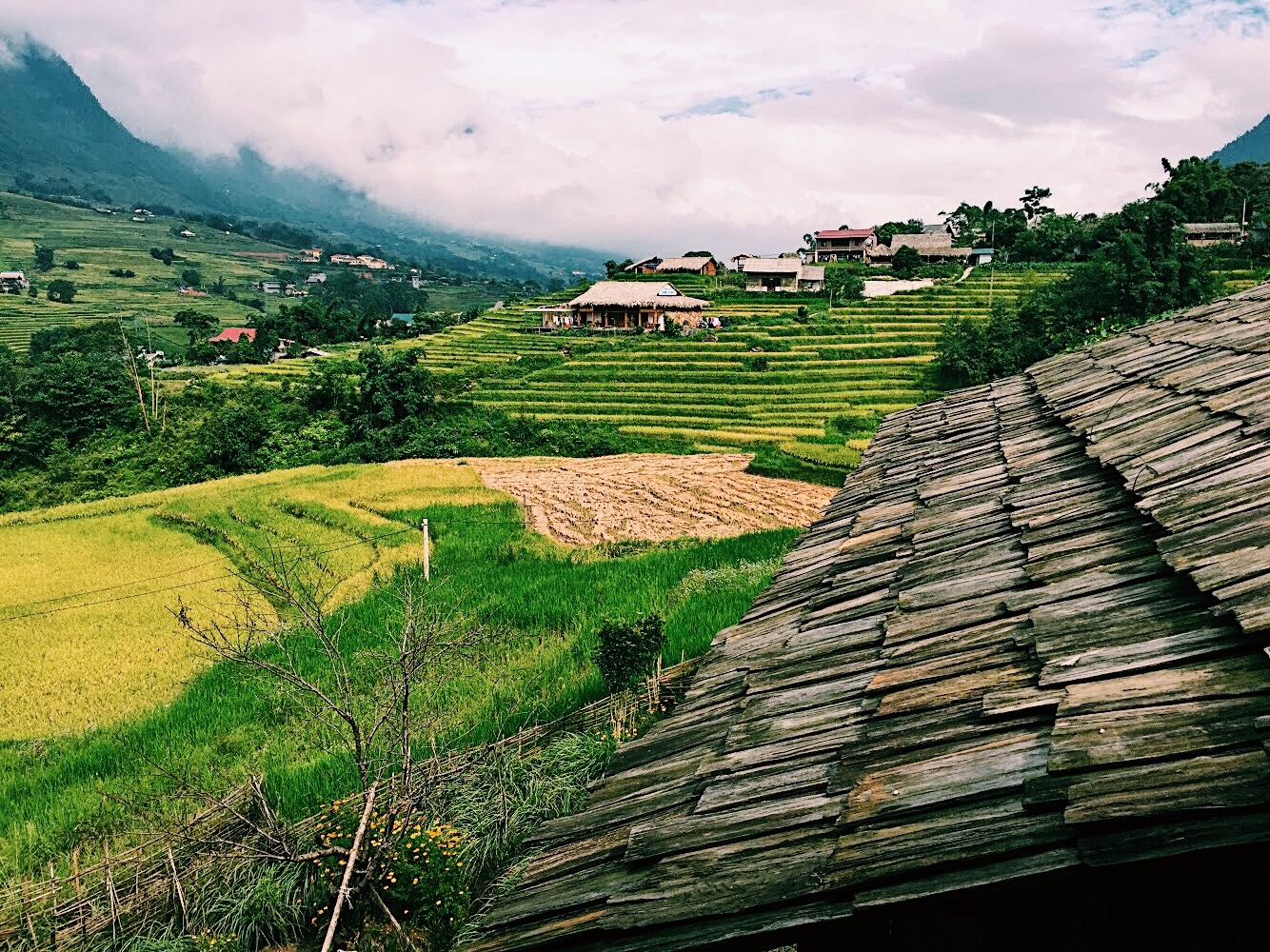
With more than 300 kilometers between you and Hanoi, there are many forms of transportation to get to Sapa, including train, bus, car, and motorbike. Because Sapa is a famous travel destination in the north, the roads are modernizing and easy for any vehicles to traverse. How to get from Hanoi to Sapa on your own is a comprehensive guide to all the transportation you can choose from.
Day 1: Conquering Majestic Mountains and Exploring Nightlife in Sapa
Start your first day in Sapa by eating free-range pig (thit lon cap nach) and fried rice-in-bamboo-tube (com lam) for your breakfast at A Quynh Restaurant. These are the famous foods of Sapa that you should try. Read unique foods that you can only try in Sapa if you want to know more!
A Quynh Restaurant
Address: 15 Thach Son Street, Sapa Town
Opening Hours: 7 AM – 10:30 PM
Contact: (+84) 214 3871 555
After your delicious breakfast, Ham Rong mountain, located in the downtown area, is a great place to watch the whole of Sapa town from above. Nowadays, Ham Rong is a tourist area with 150 hectares of land. The higher you climb, the more opportunity to explore the beautiful scenery. 12 animal statues representing the Vietnamese zodiac are situated along the pathway.
With the height of 1,800 meters, cloud fields and heavenly gates are the highlights of Ham Rong. The white clouds are thick, dense, cover the entire area, and submerge you in their fanciful scenery. Then, the heaven gates have the best view of the whole town below, take a nice photo to remember the moment. Next, fruit gardens of pear, plum, and peaches, and flower gardens blooming all year round make the mountain look more colorful and energetic in the cold weather of Sapa. Finally, the traditional music show of the H’Mong people, in which H’Mong men and women wear their traditional clothes, dance, sing, and play instruments, is a highlight that travelers should not miss.

Climb back to town and you will surely feel a little tired. Find a restaurant to enjoy your big lunch, Thang Co, another specialty food of Sapa. Thang Co is horse meat soup, a traditional dish of the H’mong people. It has a very special smell. A Quynh restaurant, where you had breakfast, is also a great place to try this dish.
In the afternoon, your next stop is Mount Fansipan, a mountain 3,143 meters in height and known as “The Roof of Indochina”. You will have a chance to sit on the longest non-stop three-rope cable car, 6,292.5 meters long, a Guinness World Record. It’s three kilometers from Sapa town to the cable car station. You can go by taxi, motorbike or walk by yourself. The taxi price is around 40,000 to 50,000 VND, and it takes ten minutes to get to the cable car station.
In March 2018, the new train route opened. It starts from MGallery Hotel in Sapa town, follows Muong Hoa mountain, and connects Sapa town with the cable car station. The train ticket is 200,000 VND and it only takes four minutes. The cable car ticket is 700,000 VND, and it takes 15 minutes to get to Fansipan. You can buy a combo ticket for the train and cable car which includes many promotions.

Sit inside the cabin thousands of meters above the ground and you can witness the beautiful natural scenery of Muong Hoa valley, the majestic Hoang Lien Son mountain range, and dense primitive forests. When the cable car arrives in Fansipan station, you need to climb up 600 stairs, which takes around 20 to 30 minutes, to stand on Fansipan peak and touch the milestone. The panoramic view with thick clouds surrounding the distant peaks is breathtaking. Besides the peak, there are other interesting places in the compound such as a bamboo garden, pagoda, Tam Quan gate, restaurant, and souvenir shop.
If you like to hike and trek instead, read our article conquering Mount Fansipan the right way. However, it takes two to four days to climb to the peak, so you will have to change your itinerary to accommodate the extra day.
At night, it’s time for a walk around town. Located in the heart of Sapa town, the Stone Church was built in 1895 by the French and it quickly became an outstanding building in this area. In front of the church is a wide stadium where ethnic groups gather to sell souvenirs. The love market is celebrated here every Saturday night. Ethnic men and women dance to the traditional music. When they find their lover, they exchange gifts to make a commitment to love. Let’s discover this romantic atmosphere.
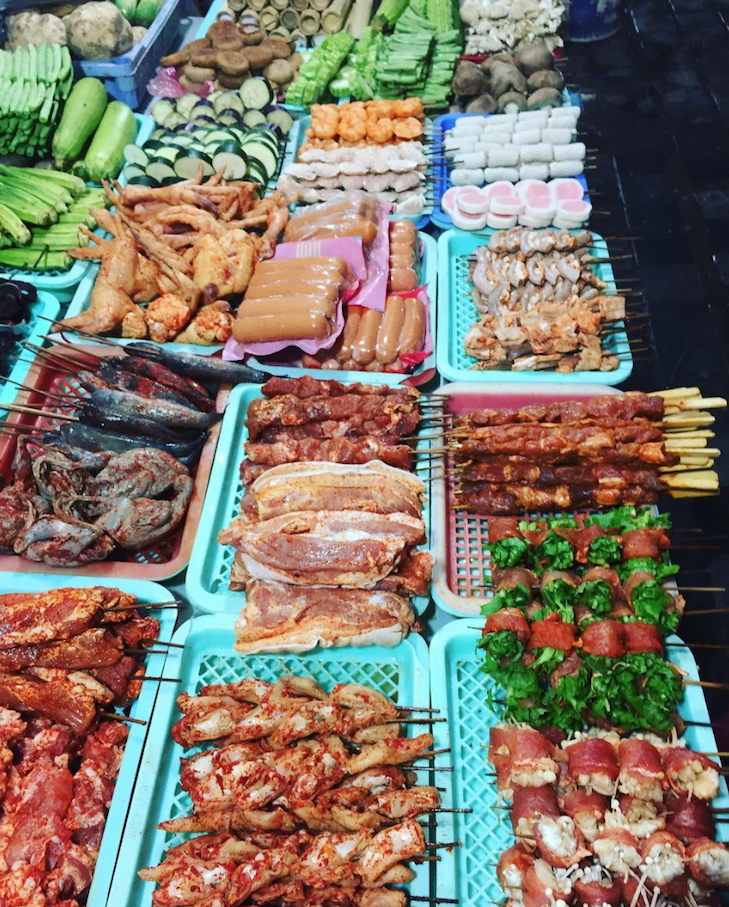
After a long day, you must be hungry. Start your feast with grilled delicacies, the most famous foods in the cold weather of Sapa. Many kinds of ingredients are barbecued on hot charcoal such as eggs, duck, bird, pig organs, chicken feet, tofu, corn, corn cake, potato, and fried rice-in-bamboo-tube. These foods are very cheap, around 8,000 VND to 15,000 VND for every skewer, and you will be full with less than 100,000 VND. The area around Sapa lake and Sapa market – Cau May street are full of grilled foods that will attract your nose right away.
Best Accommodations in Sapa
Sapa is a great place for you to relax and enjoy your time with the beautiful landscape and tranquil atmosphere. Staying in a modern hotel downtown or homestay of ethnic people in remote villages are your options. Read the best homestays in Sapa to find your favorite place to stay.
Day 2: Riding through Ethnic Villages and Muong Hoa Valley
Your first day is all about conquering two famous mountains in Sapa. The second day will have you exploring remote villages of the local ethnic groups. However, have some breakfast in town first. Thach Son street is famous for many breakfast restaurants selling different kinds of foods such as pho, bun bo Hue, and banh da ca ro dong. Restaurants on this street are usually crowded and the price is around 30,000 VND to 40,000 VND.
After your breakfast, rent a motorbike for around 100,000 VND to 150,000 VND and ride to the ethnic villages. You will visit three villages along Muong Hoa valley, Y Linh Ho, Lao Chai, and Ta Van villages, located to the southeast of Sapa town. View the route map to see the route that you will ride through.
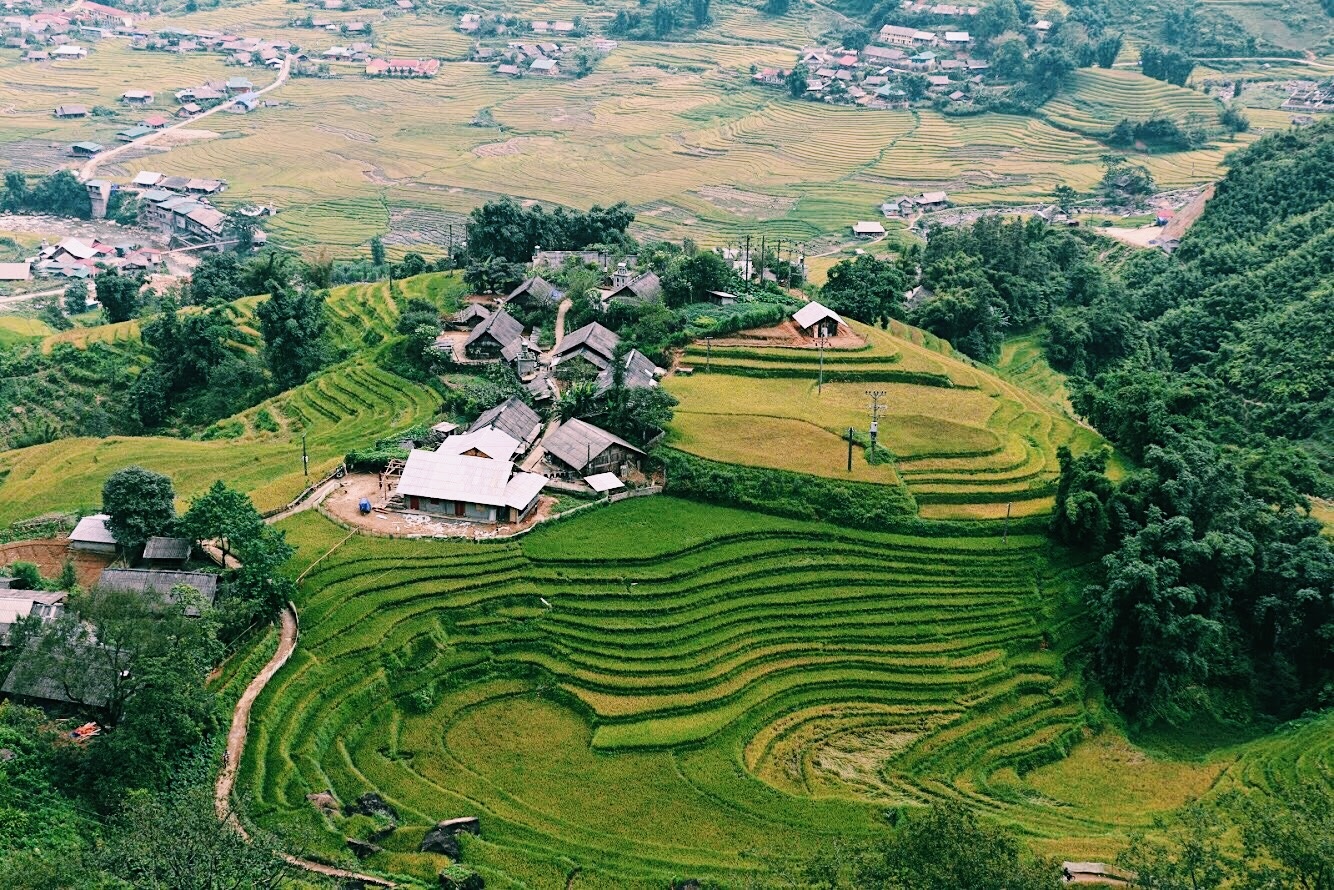
Ride on 152 Road and turn right on the small road to reach Y Linh Ho village. The road is downhill but there are only a few bends with a moderate slope. Ethnic women usually sit on top of the road, selling embroidery and brocade to the tourists. The scenery from the slope overlooking the valley is impressive with green rice terraces and the Muong Hoa stream winding in the green landscape. Y Linh Ho village includes small groups dispersed on high and steep mountains. Only a few hundred H’mong ethnic people live in this area. They build primitive houses made of earth or bamboo on the sloping hillsides to stay and take care of the corn and rice fields.
Find your way back to 152 Road, and ride down Lao Chai slope. Along the road, there are some sightseeing points for tourists. All of these spots have beautiful views. When you see the first sightseeing point, Muong Hoa stream and Lao Chai village are below. Lao Chai slope is very steep. Therefore, you should only have one person on the motorbike, and make sure that the hand brake and foot brake are in good condition. The green rice terraces with rooftops are dominant in the valley.
Before crossing the bridge, you will see the signboard. One direction points to Lao Chai San 2 village and the other direction is Ta Van village. After you ride over the iron bridge above Muong Hoa stream, you will enter the villages. Streams flow along the rice fields and you can soak your feet in the water. The stilt houses and daily activities of local people are really distinctive and worth observation.
Lao Chai and Ta Van villages have the most homestays, so these villages are crowded and bustling. Especially Ta Van village, it has many coffee shops along the street where tourists usually drink coffee while watching terraced fields in the valley. Many restaurants are also located around Ta Van village, so you can have lunch and take a break in one of these restaurants.
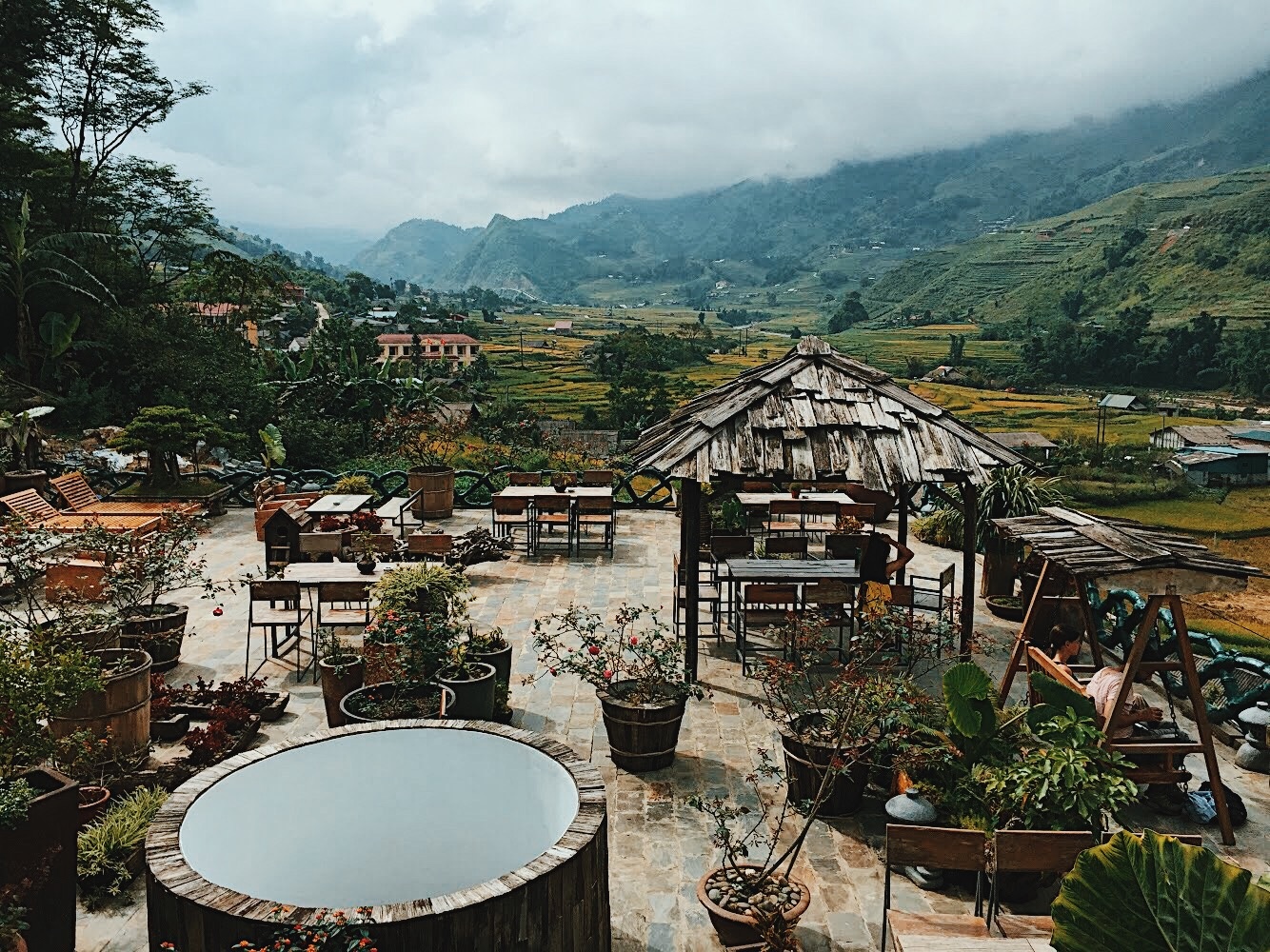
A famous site in Ta Van village is May bridge which is made of calamus. Over time, the bridge was abandoned by local people because a new iron bridge was built, and it is only used for tourism now. You must be brave enough to cross the bridge because each board is about 20 centimeters apart. If you are there in the early morning, fog covers the bridge and streams below. You will feel as if you are walking in the clouds.
From Ta Van village, continue riding 1.5 kilometers to visit Sapa Ancient Rock Field, a national historical monument. The stone slabs are scattered everywhere and protected by fences. The surfaces of the stone slabs have very faint inscriptions that are believed to be proof of the existence of humans in this area since ancient times. The H’mong people believe that the stones are books that their ancestors left behind. It is estimated that the rock field spreads to eight square kilometers with about 200 rocks. The path down to the rock field also gives you a beautiful view of Muong Hoa valley.
Your trip to the ethnic villages ends here. If you are a fan of trekking, and want to trek through many villages and have more interaction with the ethnic people, read Sapa trekking guide to set up your own itinerary. The trekking trip may take from one to four days depending on the route you choose.
After coming back to Sapa town and taking a break in your homestay, go to Hoa Dao restaurant to have dinner with black chicken (ga den), one of the most delicious foods of Sapa.
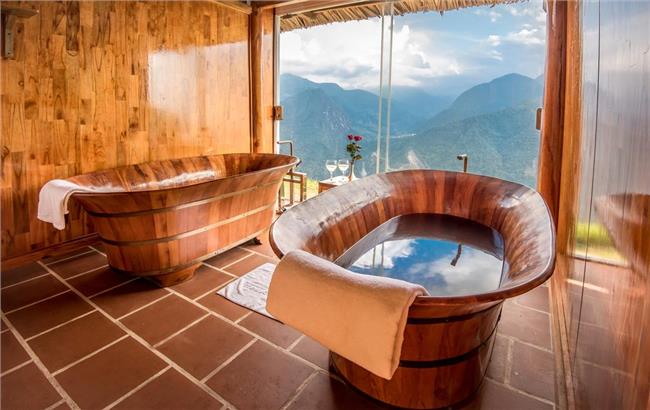
Hoa Dao Restaurant
Address: 48 Le Van Tam Street, Sapa Town
Hours: 9 AM – 10 PM
Contact: (+84) 214 3873 055
You have packed two days full with fun activities in Sapa, it’s time for you to recharge your energy with a massage. And this is no ordinary massage. Try bathing in the medicinal herbs of the Dao Do people.
Lavender Spa
Address: Floor 3B, Amazing Hotel, No 07A, Dong Loi street, Sapa town
Phone: +84 1698001565
Red Dao Spa
Address: Ta Phin village, Sapa town
Phone: +84 98 260 84 55
Website: Red Dao Spa
Accommodation in Sapa
As Sapa is a breathtaking place, it needs perfect accommodation to match! There are a variety of options available such as luxurious resorts and hotels: Victoria Sapa Resort, The Aira Boutique Hotel, Silk Path Grand Resort & Spa Sapa to mid-range choices such as Sapa Horizon Hotel, Eco Hills Homestay, and Eco Palms House Sapa Retreat. You can read more about them here: Where to Stay in Sapa? Resorts, Hotels and Homestays for All Budgets! I also have a one-and-done option for you!
Your two days itinerary in Sapa is full of beautiful scenery and interesting activities. It will be an unforgettable trip in your whole journey of Vietnam. Start your trip to Sapa as soon as possible. Read our other articles if you are still curious about this mountainous town.
Discovering Sapa: A Comprehensive Guide to Visiting Vietnam’s Northern Hill Station
Shopping in Sapa’s Markets (What to Get and Where to Find It)
Understand the Ethnic Minorities in Sapa – Part 1: The H’mong and the Red Dao
If you enjoyed reading this article and would like some more fun info about what to see, do, and eat (and a bunch of interesting cafes!) in Vietnam, follow us at The 4U Trip!
